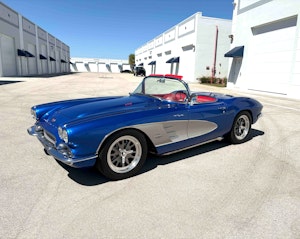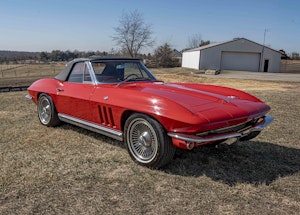Media | Articles
As Driving Season Begins, the Hagerty Market Rating Drops
The Hagerty Market Rating measures the current status of the collector car market in terms of activity or “heat,” directional momentum, and the underlying strength of the market. It is expressed as a closed 0-100 number with a corresponding open-ended index (like the DJIA or NASDAQ Composite). To learn more about how we calculate the Hagerty Market Rating, read here.
After a slight bump two months ago, the Hagerty Market Rating continues its slow descent. It’s current rating of 65.01 is the lowest its been in three years. That said, it is still 6 points higher than the floor it reached shortly after the COVID shutdowns in early 2020.
The Hagerty Market Index, an open-ended stock market-style index of the Market Rating, has dropped for 17 consecutive months. This is the longest unbroken losing streak in the Index’s history and also the steepest decline—dropping nearly 24 points in that time.
Several factors continue to influence the Hagerty Market Rating’s downward trend. Chief among them are the notable declines in sale prices at auction. The Auction Median Price metric dropped another 2 points this month down to 35.86—the lowest this metric has been since it was added to the Market Rating calculation in 2011. While the real numbers behind this metric are dropping, inflation continues to make the situation worse. The current actual median sale price at auctions is $29,400, a significant drop from its peak of $34,560 in November 2022 and the lowest value since the fall of 2020. Accounting for inflation, however, the current auction median sale price is the lowest in Market Rating history.
Softness in sale price isn’t isolated to auctions, as cars trading hands privately are also seeing less cash on the table. The ratio of cars selling above insured value on the private market has dropped to 42.6%, its lowest point in over two years. That said, it is still higher than any point prior November 2021.
Marketplace
Buy and sell classics with confidence
Only one individual metric increased this month. Following a 14-month decline, the ratio of insured value increases-to-decreases for cars valued under $250,000 is on a four-month winning streak. This ratio for high-end vehicles, meanwhile, has dropped 18 of the last 19 months to its lowest value in nearly three years. That said, both of these ratios are in the black by a wide margin. For every call Hagerty gets to lower the insured value of a broad market (sub-$250K) vehicle, we get more than eight calls to increase values. For high-end vehicles, this ratio is 2.5 calls to raise for every one call to lower.
As driving season begins, large auction events will slow down a bit and changes in the market rating will slow. Based on its recent trajectory, it’s very likely the market rating to continue to fall, gradually, through the summer.
***
Check out the Hagerty Media homepage so you don’t miss a single story, or better yet, bookmark it. To get our best stories delivered right to your inbox, subscribe to our newsletters.











I must be missing something…
The Hagerty Market Rating is; WHAT?
Is it a rating of the Company/Hagerty? On a “Stock Value”? Against other Insurers?
Is it a rating of the collector car Market?
Is it a rating of collector car Insurance, generally?
The headline is non-definitive, and even the article’s text fails to enlighten.
What about collectible car sales where no insurance or registration yet occurs? These must be a considerable number.
You got some ‘splainin’ to do…
We’ve added an explainer up top with a brief explanation of how the rating works, with a link out to a deeper explanation of how we calculate it.
I agree that I see modern muscle coming down in price. Used Pontiac WS6’s, C6 Z06’s and 5th Generation Camaros are all heading down for differing reasons.
I think the market is getting smaller for a 2nd or 3rd car that you use occassionally. The insurance costs, parts availability and time needed to keep them in good condition is high. Not all younger folks have the resources.
It’s got nothing to do with politics. I could say the same thing about the prime minister of Canada. The real reason for the problem is the greed after Covid. Suppliers got use to the fat profits and gouging. Personally I’d say get used to it, because it’s here to stay. My opinion.
THANK YOU PAUL….
So many citizens are fast to blame the president for the worldwide situation, and not realize how little control a president has over inflation and other global problems. If you don’t believe me, research CREDIBLE sources. That does exclude sources which are both biased and deceitful.
I agree Paul I’ve been restoring 356 Porsches for decades. I can’t brake even if you give me the car. …..Jim.
Knee-jerk response. Please take the simpleton political comments to another venue.
Your comment is awaiting moderation.
It’s a bit annoying that when I say things this happens to me often. I can say “Hey I saw a GTO in blue today” and it will get moderated. Why? This system is paranoid. I may at times say things people don’t like but I’m not out to offend. I just want to offer my opinion which if that is not welcome here then what is the point of having a comment section.
Happy Warrior. You are RIGHT!
I own a 1968 Cutlass S Conv. this automobile is not on your list of vehicles, re: value ?